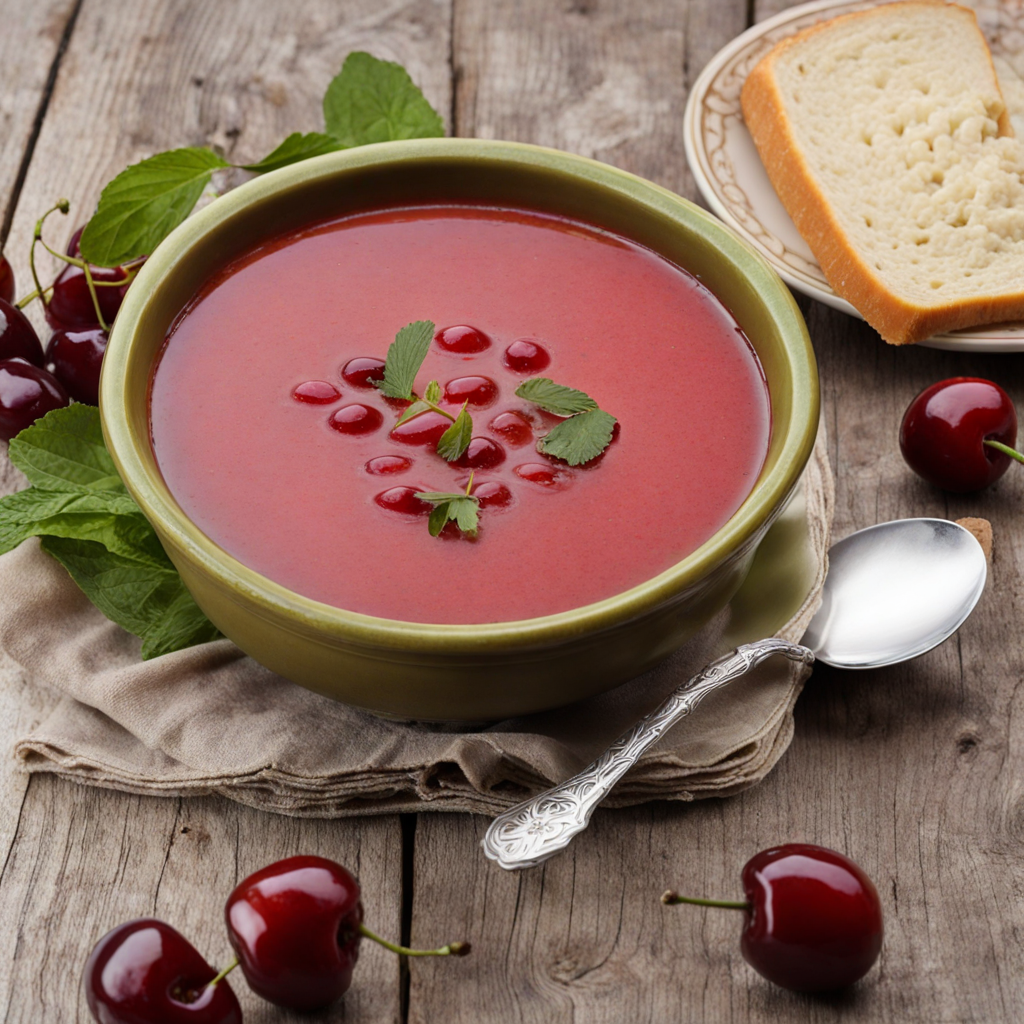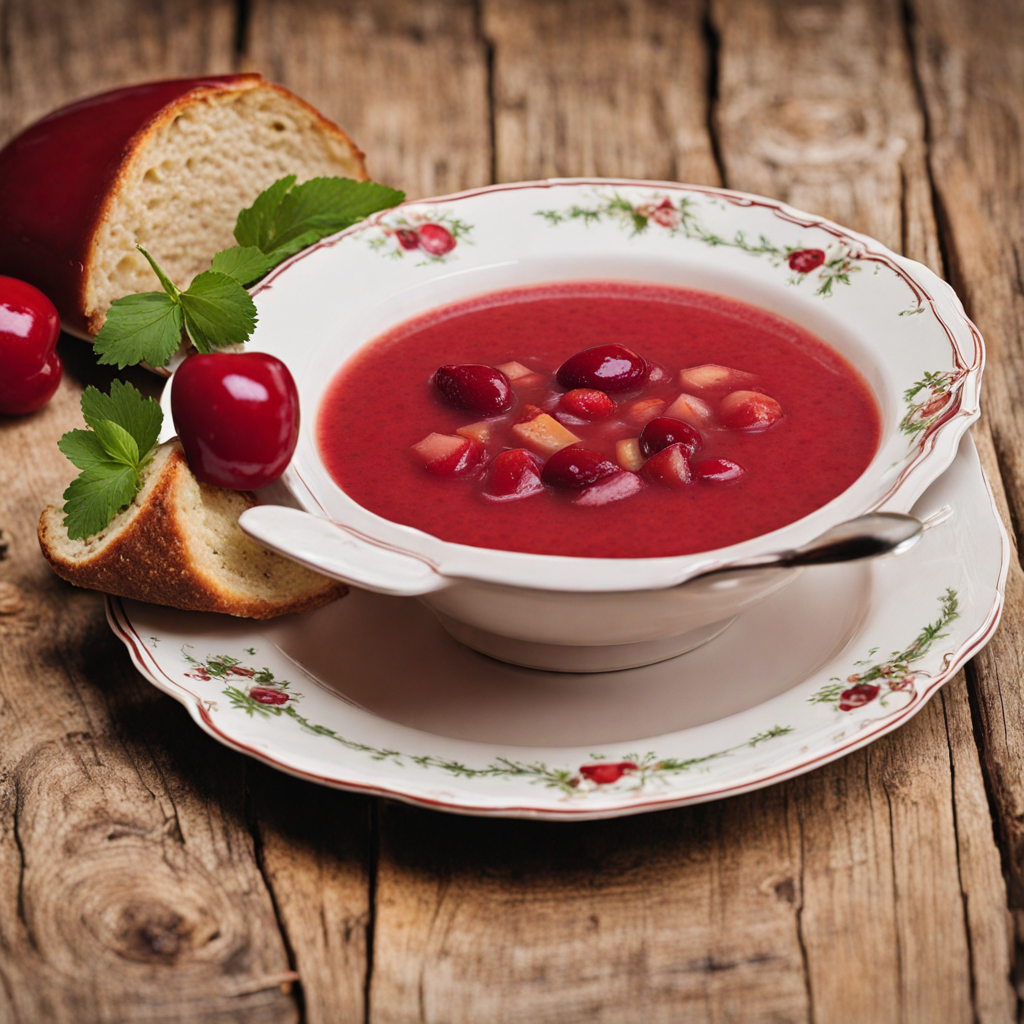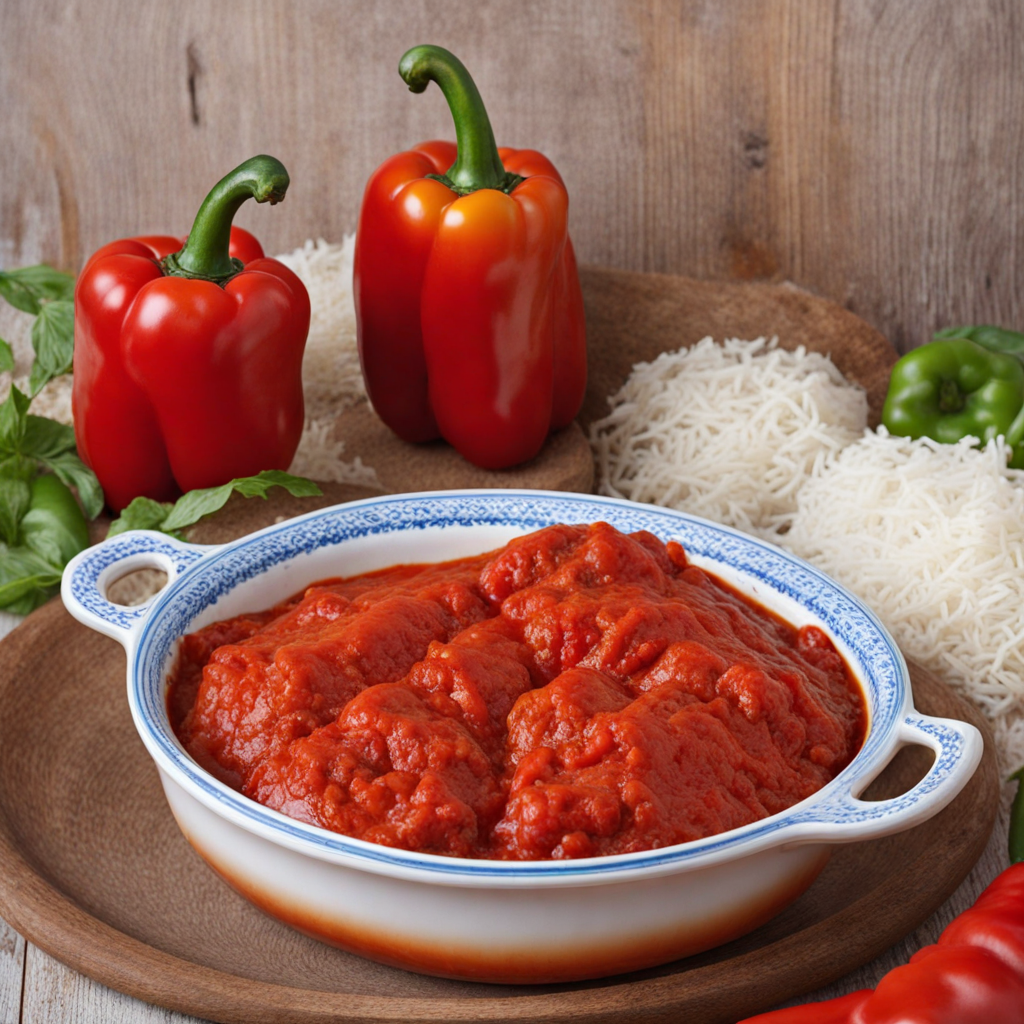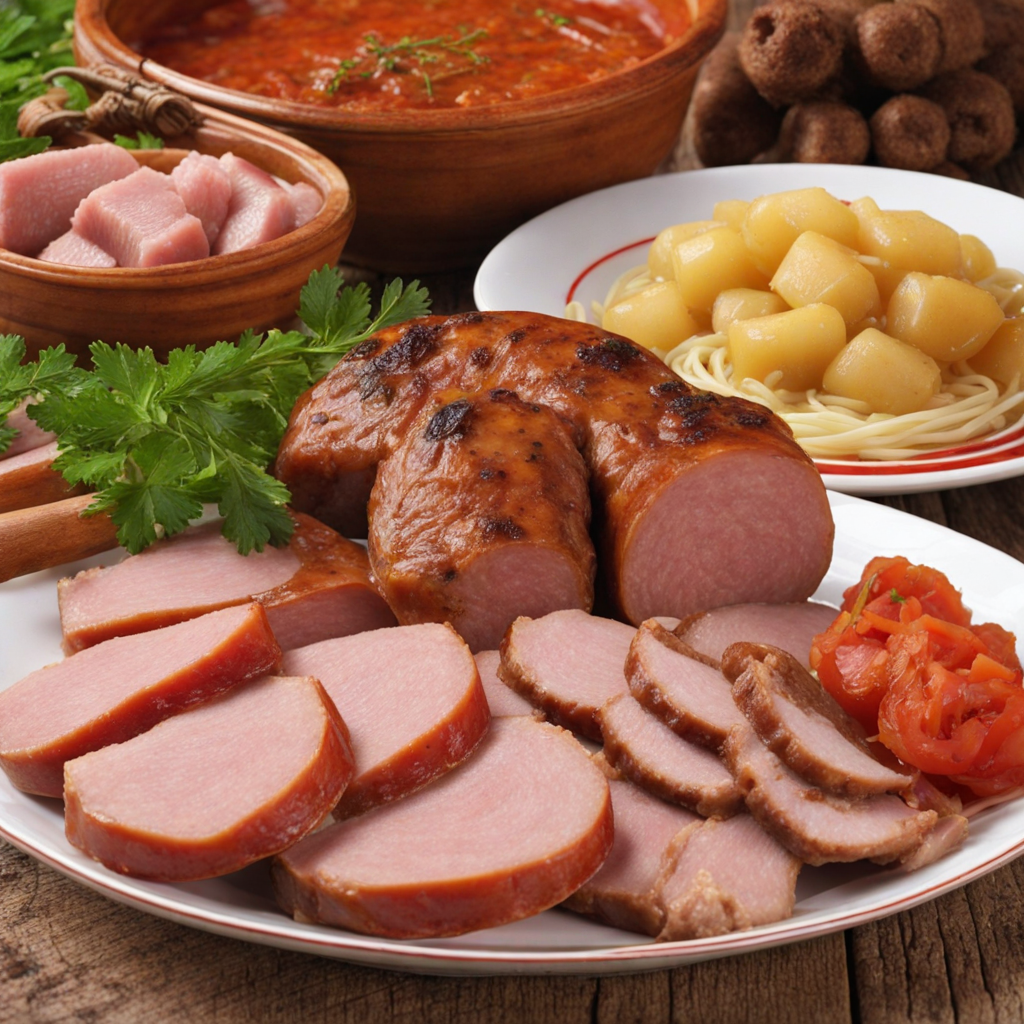Hideg Meggyleves
Hideg Meggyleves, or cold cherry soup, is a delightful and refreshing dish originating from Hungary, perfect for warm weather. This unique soup is typically made from ripe, tart sour cherries, which are the star of the show. The cherries are pitted and simmered with sugar, water, and sometimes a hint of lemon juice to enhance their natural acidity. The result is a vibrant, rosy-red liquid that bursts with the sweet-tart flavor of cherries, making it a delightful starter or dessert. To elevate the experience, Hideg Meggyleves is often served chilled, garnished with a dollop of sour cream or a swirl of whipped cream, which adds a creamy texture and balances the tartness of the cherries. Some variations may include a splash of red wine or a sprinkle of cinnamon for added depth of flavor. The combination of the cool, fruity soup with the creaminess creates a delightful contrast that tantalizes the taste buds. This dish not only tantalizes the palate but also offers a glimpse into Hungarian culinary traditions. It is often enjoyed during the summer months, celebrating the bountiful cherry harvest and bringing a touch of seasonal freshness to the table. Whether served as an appetizer or a light dessert, Hideg Meggyleves is a charming way to discover the distinctive flavors of Hungarian cuisine, leaving a lasting impression with its vibrant colors and refreshing taste.
How It Became This Dish
The Chilling History of Hideg Meggyleves: Hungary's Refreshing Cherry Soup #### Origin and Early History Hideg Meggyleves, or cold cherry soup, is a quintessential dish from Hungary that embodies the country’s rich culinary traditions and agricultural heritage. Its roots can be traced back to the medieval period when sour cherries were among the first fruits cultivated in the region. The tartness of these cherries made them a favored ingredient in both sweet and savory dishes. Historically, cherries were not just popular for their flavor but also for their health benefits. In the days before refrigeration, the preservation of fruits was essential for survival through harsh winters. Sour cherries, with their high acidity, were ideal for making jams, jellies, and soups that could last longer. This practice laid the groundwork for Hideg Meggyleves, which evolved as a refreshing dish enjoyed during the warm summer months. #### Cultural Significance In Hungary, food is not merely sustenance; it is a vital part of social gatherings, celebrations, and family life. Hideg Meggyleves is particularly enjoyed during the hot summer months, making it a staple at picnics, barbecues, and family reunions. The soup is a symbol of Hungarian hospitality, often served as an appetizer or a light course during festive meals. The preparation of Hideg Meggyleves showcases the Hungarian ethos of utilizing local produce and traditional methods. Families often have their own recipes handed down through generations, each with unique twists. The soup's vibrant red color is not only visually appealing but also represents the richness of Hungarian cuisine, which is known for its bold flavors and colorful presentations. The dish is also significant in terms of national identity. It reflects Hungary's agrarian roots and the importance of cherry cultivation in the country. The sour cherry, or "cseresznye," is so revered that it has become a symbol of the country’s agricultural prowess, celebrated in festivals and local markets. #### Ingredients and Preparation The primary ingredients of Hideg Meggyleves are sour cherries, sugar, and water. Some variations may include ingredients like sour cream, cinnamon, or vanilla to enhance the flavor profile. The soup is usually served chilled, making it an ideal dish for hot summer days. To prepare Hideg Meggyleves, the process typically begins with the pitting of fresh sour cherries, which are then simmered with sugar and water to create a flavorful base. The mixture is often thickened slightly with cornstarch or served as a broth, depending on regional preferences. Once cooled, it can be garnished with a splash of sour cream or a sprinkle of cinnamon before serving. The simplicity of the dish speaks to the heart of Hungarian cooking: using natural, high-quality ingredients to create something both delicious and satisfying. #### Evolution Over Time As with many traditional dishes, Hideg Meggyleves has undergone various transformations throughout history. In the early days, it was primarily a peasant dish, made from whatever ingredients were available. Over time, as Hungary transitioned into a more urbanized society, the soup found its way into the kitchens of the middle and upper classes. In the 19th century, with the rise of the Austro-Hungarian Empire, culinary influences began to merge, and Hideg Meggyleves started to be served in more formal settings. Chefs began to experiment with presentation and flavors, elevating the dish from a humble summer soup to a refined culinary experience. The introduction of dairy products like sour cream added richness, while spices like cinnamon brought warmth and complexity. In contemporary Hungary, Hideg Meggyleves continues to be a beloved dish, often featured in both home cooking and restaurant menus. It is not uncommon for chefs to put their own spin on the classic recipe, introducing modern techniques or complementary flavors while still honoring its traditional roots. For instance, some chefs may incorporate fresh herbs or even a splash of alcohol, such as Hungarian pálinka, to enhance the dish. #### A Symbol of Seasonal Eating One of the most appealing aspects of Hideg Meggyleves is its embodiment of seasonal eating. The dish is typically made during cherry season, which occurs in late spring to early summer. This practice aligns with the broader trend of farm-to-table dining, where local and seasonal ingredients are prioritized. Moreover, as global interest in health and wellness has grown, Hideg Meggyleves has gained popularity outside of Hungary as a nutritious and refreshing option. Its low-calorie count and rich vitamin content make it an appealing choice for health-conscious diners. The soup's natural sweetness from the cherries, combined with the cooling effect of being served cold, has established it as a delightful dessert alternative in various culinary settings. #### Hideg Meggyleves in Modern Culinary Culture In recent years, Hideg Meggyleves has garnered attention in international food circles, often featured in food blogs and culinary festivals focused on traditional and ethnic cuisines. Its appearance on social media platforms has introduced it to a wider audience, sparking interest in Hungarian cuisine. Cooking classes and culinary tours in Hungary often highlight this dish, allowing tourists to engage with local traditions and experience the flavors of the region. Home cooks around the world are now experimenting with the recipe, adapting it to include other fruits or using alternative sweeteners, thereby evolving the dish while retaining its essence. #### Conclusion Hideg Meggyleves is more than just a cold soup; it is a reflection of Hungary's rich culinary heritage, cultural significance, and seasonal eating philosophy. From its humble beginnings to its modern adaptations, this dish captures the spirit of Hungarian hospitality and the beauty of local ingredients. As it continues to evolve, Hideg Meggyleves remains a beloved staple that connects generations and nurtures community bonds, ensuring its place in the hearts and homes of many for years to come.
You may like
Discover local flavors from Hungary







